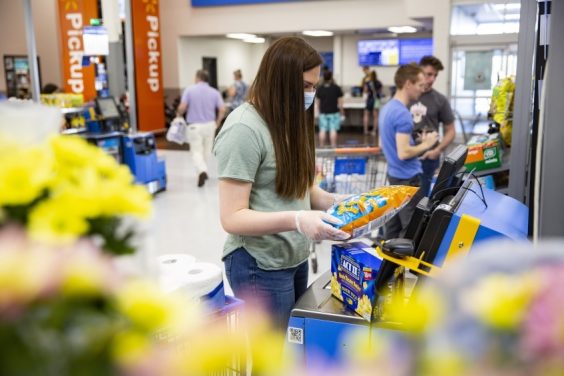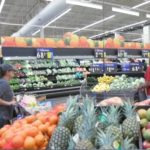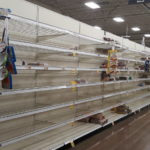
Even in a best-case scenario, if the coronavirus crisis eases in the coming weeks and months, the economic effects could linger for much longer. That means many things – including our grocery shopping habits – aren’t likely to return to what we once considered normal, any time soon.
“Consumers provide a pessimistic view of coming months,” warns the latest report from the market research company IRI, which notes that “consumer sentiment indicates the economic fallout of COVID-19 will last far longer than the health crisis.” Shoppers are bracing for long-term changes, with only one in five saying they expect to go back to their old spending habits once the crisis passes.
29% of shoppers tell IRI that they’re having difficulty affording needed groceries. That number soars to 68% among lower-income shoppers, though interestingly enough, it’s only 11% among those identified as “savvy shoppers” – suggesting that they were already well-supplied with a stockpile and didn’t have to bust the budget to fill their pantries on short notice.
55% of shoppers have opted for store-brand items to help save money – though it could also be because branded products are less available. The most popular store-brand purchases include napkins, household cleaners, paper towels and tissues, while the most popular store-brand food item is baking nuts – which shows that people are indeed doing a lot more cooking and baking from scratch these days.
In the long term, IRI predicts that shoppers facing a new economic downturn “are likely to exhibit behaviors evident in prior recessions.” Back in 2008, two-thirds of shoppers said they had cut back their spending on nonessential groceries, while half said they were buying more private label products and trying lower-priced brands.
So the shopping and savings strategies that many people have adopted, may not be just temporary. More than 60% of shoppers surveyed now believe the coronavirus crisis will last for at least three more months. So they’re hunkered down, stocked up, and watching their spending after filling their pantries during the early days of the pandemic.
IRI says March 13, the day the U.S. declared a national emergency, was the largest grocery shopping day of the year by far. Since then, grocery purchases are still higher than they were at this time last year, but they’ve slowed significantly since last month. The store categories showing the largest sales declines include detergent, canned soup and frozen meals – indicating that shoppers scooped them up when they had the chance, and now their stockpile is secure and they don’t need any more right now.
Changes that may linger after the crisis eases, aren’t limited to the specific products we buy. There’s also the matter of how and where we buy them. 21% of shoppers say they’ve ordered more groceries online. “But out-of-stocks are a challenge in this channel,” IRI notes, not to mention that it can be difficult to secure a delivery or pickup slot. But retailers are likely to learn from these challenges by ramping up their capabilities and better serving shoppers who have made the switch from shopping in-store to online, and don’t necessarily want to switch back.
For those who are still shopping in person, many have sampled stores they otherwise wouldn’t frequent – like dollar stores, drug stores and convenience stores. IRI notes that convenience stores in particular have seen an uptick in purchases of nonedibles like baby care, paper products and household items, along with dairy products like butter and eggs, possibly due to shoppers seeking out alternate sources when their grocery stores sell out. “An opportunity exists for the convenience channel to provide more fill-in and fresh items” in the future to keep these shoppers coming back, IRI suggests.
In the short term, IRI predicts that “fewer trips, weekday trips and larger baskets will be the new shopping pattern” at grocery stores, while “fresh product sales will rebound” once shoppers find that they’re fully-stocked with nonperishables. But in the long term, shoppers may end up embracing a new frugality, cutting back on their spending and looking for deals – because unless this health and economic crisis ends soon, they may not have a choice.
Image source: Walmart










